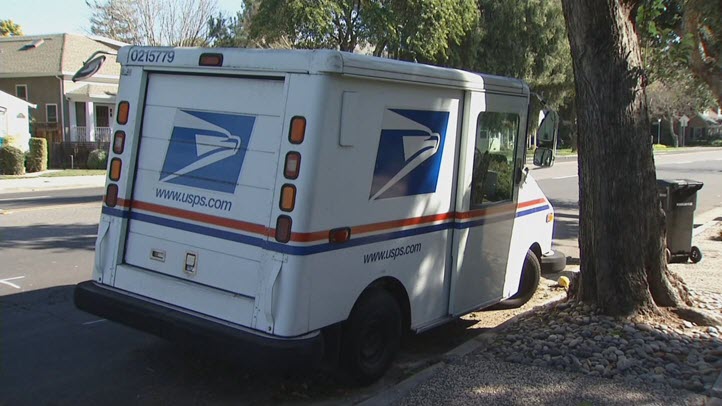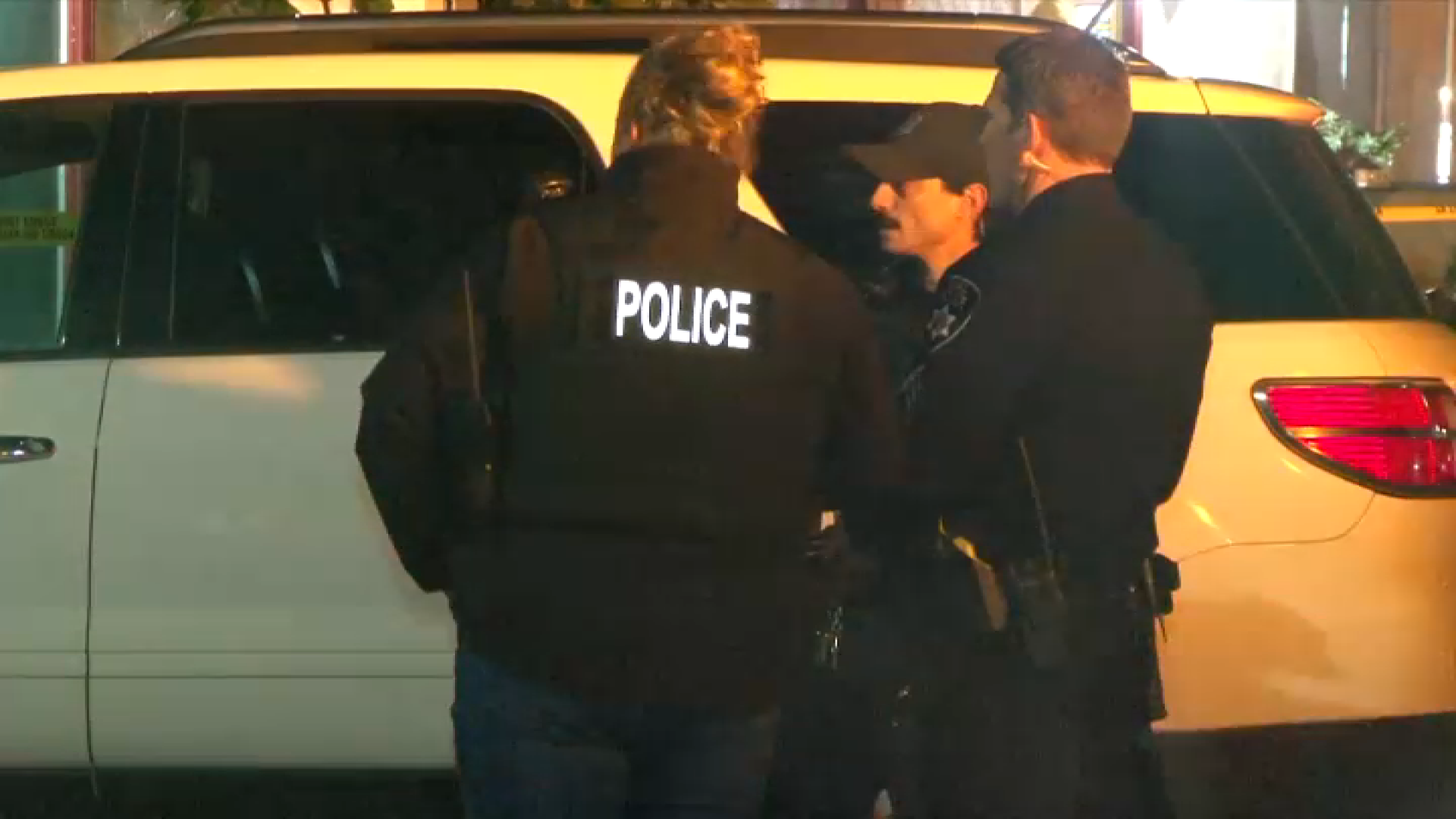Castro Valley, the Bay Area’s largest unincorporated area, was once a rural ranching community that has grown into a suburban area that 61,000 people now call home. Fewer than half the streets in Castro Valley have sidewalks, and residents say walking around safely is a daily struggle.
Citizens say they’ve proposed a number of simple, temporary fixes that would help alleviate dangerous conditions that sometimes put children, the elderly and the disabled in the path of speeding cars, but they say local leaders haven’t taken their ideas seriously and aren’t taking any steps to implement them, leaving pedestrians to fend for themselves.
“It’s not easy,” said Maureen Gilhooly, a longtime Castro Valley resident. “You need sidewalks to get around your community. You need sidewalks to get to school,” she added.
Gilhooly knows the problem firsthand. Her 18-year-old son, Ian Doporto, relies on a wheelchair to get around town. Doporto says the absence of sidewalks forces him to travel in the street, where he has to share the road with passing cars. It also presents a struggle when his wheels are caught in potholes and other rough patches on the streets that weren’t designed for the disabled, making it difficult for Doporto to join friends for school activities.
“It's very hard to go off campus if I want to have lunch outside of school because there's not a lot of accessible sidewalks for wheelchair-bound people or for people with physical disabilities,” Doporto said.
As an unincorporated area, Castro Valley falls under the purview of Alameda County. Sidewalk construction and maintenance is handled by the county’s Public Works Agency.
“Castro Valley wanted to be a rural community, so sidewalks were not included as a part of development of homes,” said Art Carrera, principal engineer for the Alameda County Public Works Agency.
Local
Carrera acknowledged that the growth of Castro Valley’s population has dovetailed with a growing need for sidewalks, but he says building sidewalks doesn’t come cheap. According to Carrera, the county surveyed its unincorporated areas several years ago to determine how many sidewalks were needed and where. Ultimately, the county estimated the total bill for building all of those sidewalks would be $400 million. Most sidewalk projects take roughly two to four years to be constructed, Carrera said.
Residents say they understand the process can be slow, but they argue the county has done little to consider temporary fixes such as painting lines or pouring asphalt curbs to separate pedestrian pathways from where cars drive and park.
“They're failing to consider the short-term solutions that are inexpensive and are an easy way for them to enforce protecting where people walk,” said JoAnne Lauer, the leader of a community group called Bike Walk Castro Valley.
Carrera says the county so far hasn’t painted lines or installed asphalt curbs as residents have suggested because of cost, maintenance and liability. However, after the NBC Bay Area Investigative Unit raised questions about access issues, he said the county would consider making other types of delineations for the safety of individuals in wheelchairs.
“That's a special condition,” he said. “We would want to especially make it safe for somebody in a wheelchair, but they need to contact us so we know those specific locations and see if we can take a look at some sort of temporary measure to make that.”
One interim solution the county has focused on is encouraging residents to practice defensive walking. The city spent $4,000 on two separate public service announcements meant to encourage both safe driving and defensive walking practices.
“You’ve got to take safety into your own hands,” Carrera said.
He said another option is for residents to pay for the sidewalk projects themselves. Depending upon the length of the sidewalk, the average project can range from $500,000 to $1 million.
Eric Shen, who has worked as a traffic engineer for 25 years and currently teaches at the University of Southern California, said there are other low-cost options the county can explore.
He pointed to Botts’ dots that stick to the ground or the use of white traffic delineators as inexpensive solutions that could be used to delineate a pedestrian right-of-way in the spaces where there are not currently sidewalks.
“Those are low cost and easy to install,” he said. “Agencies have more flexibility to install them and remove them when they are no longer needed.”
When asked about the possibility of utilizing these temporary fixes, Carrera said he would consider them as options.
In the meantime, he urges residents to report blocked sidewalks using the Mobile Citizen app. Records show that residents do utilize the app, often reporting cracks and rough terrain, as well as debris and even cars parked on sidewalks blocking the path for pedestrians.
Roughly 130 complaints have been made to the county regarding blocked or unsafe sidewalks since 2014.
But enforcement is spotty, especially when it comes to cars blocking pedestrian pathways. Residents NBC Bay Area spoke with say it’s a common occurrence and one of the main reasons people are often left with no option but to walk into the street just to get around town.
The Sheriff’s Department issues an average of one ticket per day countywide for cars that park on sidewalks.
Meanwhile, residents are doing their own fundraising to expedite the sidewalk construction process.
Lauer says she and other members of Bike Walk Castro Valley have spent hundreds of hours helping the county write proposals for state and federal grants.
Lauer says she was inspired to get involved with the sidewalks issue after her son and his friend were hit by a car while walking home from school one day. Lauer’s son suffered a sprained ankle, and his friend broke his leg. She said the event served as a wakeup call.
“After that, I started talking to other parents and other people in the community, and we started realizing we needed to do something,” she said.
One of those parents Lauer spoke with was Anna Tumlinson.
“Everybody's so scared to walk to school,” Tumlinson told NBC Bay Area.
She said her daily walk to Stanton Elementary School, where her two young children are students, is just a few blocks from her home. She added that they are regularly forced to walk in the street because narrow streets abound, and cars park in the pedestrian right of way.
What should be a short walk to school, Tumlinson says, has become increasingly dangerous. In fact, she was recently swiped by the side mirror of a passing car while making the trek.
“My kids were certainly afraid because it made a loud crack,” she said. “It could have hit my kids.”
Art Carrera says the county is working its way down a priority list for needed sidewalk projects. The list was generated from that sidewalk survey conducted by the county several years ago. Carrera added that the county is just now getting to the projects in Castro Valley.
“We are working as fast as we can,” Carrera said. The county currently has roughly 30 sidewalk projects it is working to complete, he said.
The county has constructed nine sidewalks in Castro Valley in the past 12 years, all of which were completed near schools as part of the county’s Safe Routes to School program.
Seven more sidewalk projects in Castro Valley are currently in the design or construction phase and scheduled to be completed in the next few years.
For Gilhooly and her son, anything would be a step up from having to travel in the busy street. That’s why they hope the county will move quickly to implement temporary fixes in areas with high pedestrian traffic.
“It would definitely make a big difference for me and a few other members of the Bay Area disabled community,” Doporto said.



